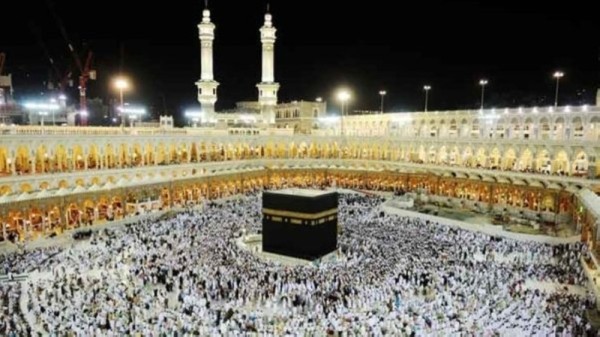
Muscat : The number of pilgrims from the Sultanate of Oman for 1446 AH reached 13,944 pilgrims, who completed 99.6 percent of the Hajj requirements, while 56 pilgrims are still completing the procedures.
This came during a press conference held by the Omani Hajj Mission at the Ministry of Endowments and Religious Affairs regarding the indicators, statistics, and improvements for this year's Hajj season.
His Excellency Ahmed bin Saleh Al Rashdi, Undersecretary of the Ministry of Endowments and Religious Affairs and Head of the Omani Hajj Mission, stated that the Hajj quota for the Sultanate of Oman this year reached 14,000 pilgrims, including 13,530 Omani pilgrims and 470 resident pilgrims. The total quota was distributed among the governorates based on population density (number of residents) for each governorate aged 18 and above.
His Excellency added that Muscat Governorate topped the governorates' quota with 24 percent of the total quota, followed by North Al Batinah Governorate with 19 percent . Musandam Governorate received the lowest percentage, less than 1percent of the total approved quota.
His Excellency indicated that eligibility is granted electronically through the electronic registration system for pilgrims from the Sultanate of Oman, using mathematical equations based on Sharia principles and jurisprudential considerations that take into account various aspects and objectives, including the social aspect.
Al Rashdi explained that the indicators for the distribution of pilgrims by type of Hajj show that obligatory Hajj pilgrims accounted for the largest proportion, with a total of approximately 11,780 pilgrims, representing 84 percent of the total quota. They were followed by voluntary pilgrims, those performing Hajj on behalf of the disabled, those performing Hajj as a will, those performing Hajj on behalf of the deceased, and finally those with terminal illnesses.
Regarding indicators by age group, His Excellency stated that the 30-45 age group led the way with 39 percent , followed by the 45-60 age group, then those over 60 with approximately 16percent, and finally, the 18-30 age group with 5 percent .
Al Rashdi added that the majority of the pilgrims from the Sultanate of Oman chose to perform Hajj by air, with over 63 percent choosing to perform Hajj by air, while the percentage of land pilgrims reached 37 percent. The average cost of Hajj by land was OMR 1,417, compared to OMR 2,063 by air.
He stated that the Omani Hajj Mission launched a number of unique initiatives this year, including the Beit Al Rabat Endowments Initiative to support those eligible for Hajj during the 1446 AH season from social security categories. More than 150 pilgrims benefited from this initiative, totaling more than OMR 150,000.
Al Rashdi also noted the First Hajj and Umrah Exhibition, in which more than 30 entities from the public and private sectors participated.
Al Rashdi added that the Mobile Vehicles Initiative for the Elderly aims to provide vehicles for performing the Tawaf and Sa'i rituals, and is expected to benefit approximately 450 elderly and disabled pilgrims this season. Meanwhile, the Electronic Bracelets Initiative provides a number of electronic bracelets for the elderly and those with special medical conditions to enhance security, monitor follow-up, and reduce cases of loss.
His Excellency stated that the Hajj Companies Readiness Measurement Initiative aims to ensure the highest standards of efficiency and quality and improve Hajj companies' performance in line with the next phase of managing Omani pilgrims, based on specific performance indicators. Meanwhile, the initiative to expand the Omani pilgrims' transportation plan through land ports seeks to reduce the average bus wait time at the land port from 4 hours to approximately 45 minutes.
His Excellency explained that the mission has implemented a number of new improvements for this year's Hajj season (1446 AH) at Omani camps in the Holy Lands, covering several important aspects and service sectors. In the Mina camp, 75 new restrooms were added, bringing the total to 267, and 250 new washrooms and ablution facilities were added, bringing the total to 356. In the air conditioning sector, 150 new split units were added, bringing the total to 900 split units, in addition to other air conditioning systems.
In Arafat Camp, 100 new restrooms were added, bringing the total to 320, and 250 new ablution basins were added, bringing the total to 312. Air conditioning in Arafat Camp was also improved and enhanced, with a total of 60,000 air conditioning units per 32 square meters, compared to 40 square meters last season.